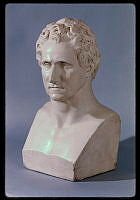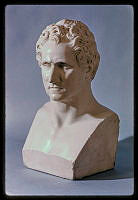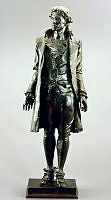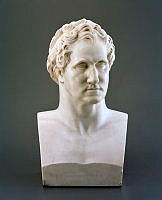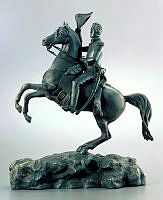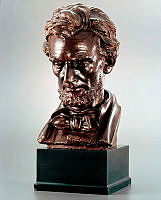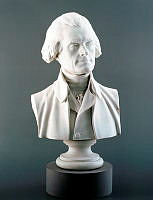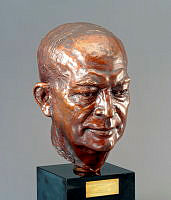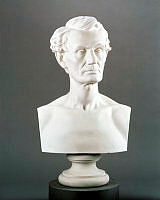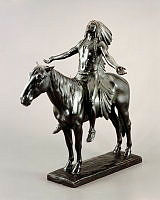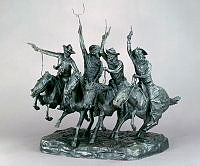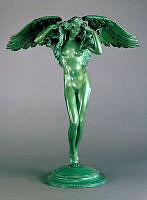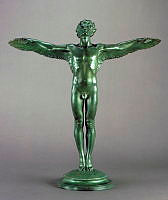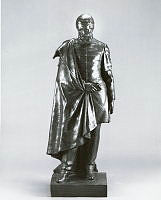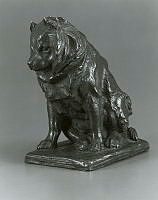Appeal to the Great Spirit, White House Collection
This small bronze statue is by sculptor Cyrus E. Dallin and was cast by the Gorham Manufacturing Company. The statue is of an American Indian, possibly a chief, sitting on horseback with his arms outstretched, palms up and head back, looking to the sky. Dallin was an American sculptor known for featuring American Indian subjects in his work, although he also created sculptures of Paul Revere and other notable figures.
